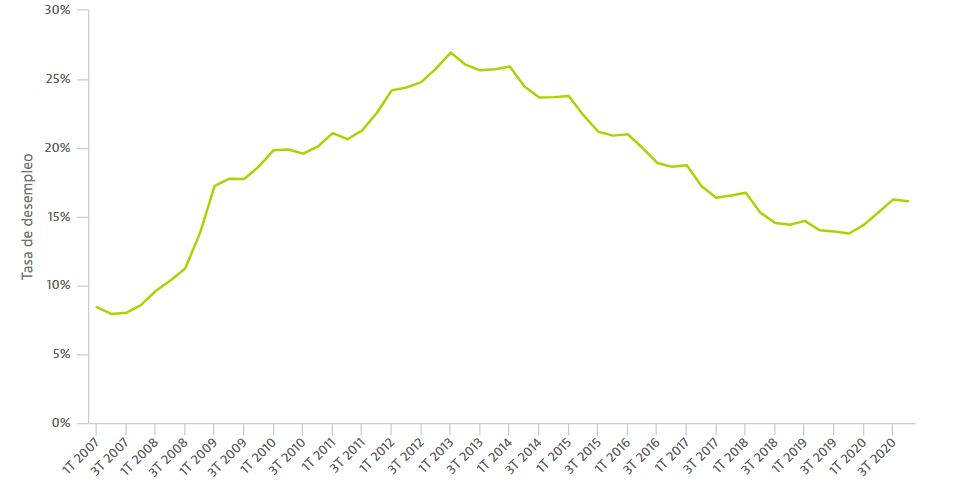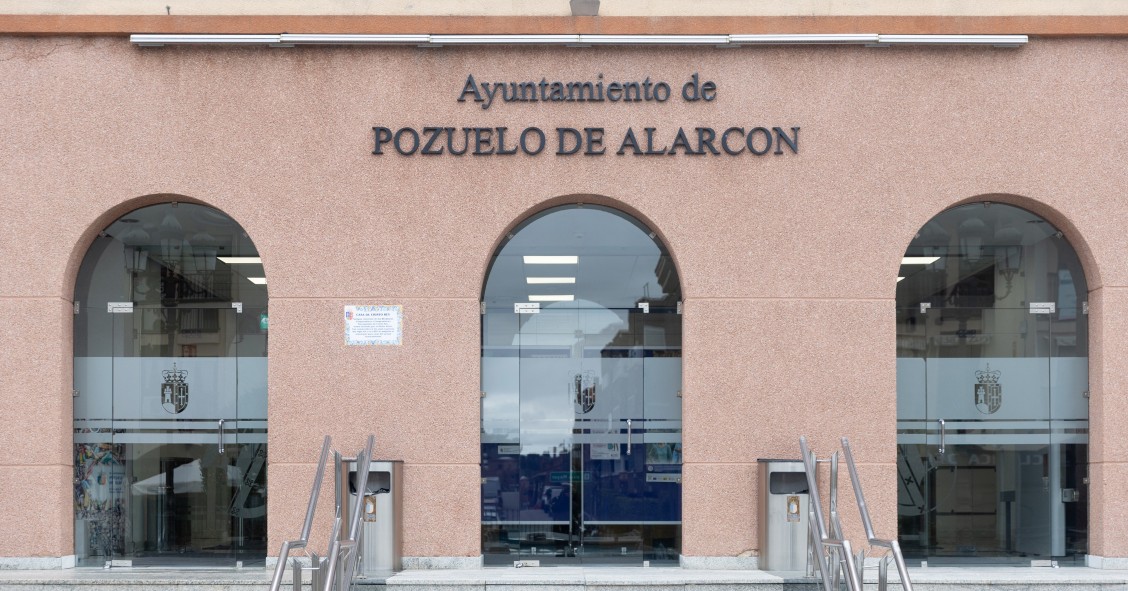
The unemployment rate in Spain in 2020 rose to 16.13%. This figure, which closed the financial year dominated by COVID-19, showed a slight improvement on the third quarter of 2020, according to the "Encuesta de Población Activa", or "EPA" (working population survey) published by the National Statistics Institute in Spain (INE).
This is the highest level of unemployment in Spain since the beginning of 2018, after registering a rise of 2.3 points in the last 12 months, and leaves the total number of unemployed people in Spain on the verge of 3.72 million, while the number of those who are employed drops to 19.34 million.
In absolute terms, more than half a million people became unemployed in Spain in the year of the coronavirus pandemic (527,900 people to be precise), while employment has fallen by 622,600 people (-3.12%). These are the worst records witnessed in Spain since 2012, one of the most challenging moments of the economic and financial crisis, when Spain was on the brink of international bailout.
As the National Statistics Institute explains, the biggest falls in the number of unemployed workers have been seen in Extremadura (-12,200), Murcia (-5,500) and Galicia (-3,200), while the biggest rises in unemployment have been recorded in Catalonia (132,100 more unemployed), the Community of Madrid (127,700) and Andalusia (83,400).
Why is Spain's unemployment so high? In the case of 2020, one leading cause of such high unemployment is because the economy in some areas of Spain is based mostly on the tourism sector which was brought to a halt during the pandemic. The unemployment rate in Spain now in 2021, despite standing at over 16%, has started the year better than the expert consensus expected. Funcas, a think tank dedicated to economic and social research, for example, placed unemployment on the verge of 17%. Looking ahead to the rest of 2021, the forecast points to a further rise and there are analysts who say that unemployment in Spain in 2021 will rise to a rate at over 18%.
The evolution of the unemployment rate in Spain from 2007-2020







